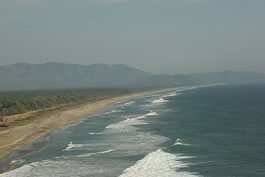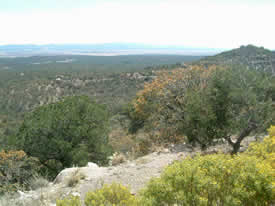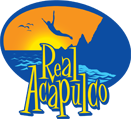Geography

To make sense of Acapulco’s geography, you need to take a look at the whole state of Guerrero. Guerrero has an area of 26,000 square miles (somewhat smaller than Austria and larger than Switzerland). The state runs for 250 miles along the coast, and extends inland 140 miles. About 3.3 million people live in Guerrero. Almost 2 million of them live in Acapulco and its immediate environs.
Guerrero is blessed with a wide variety of landscapes – from the lush tropical coast with its beaches and mangrove swamps, to the “Cloud Forest” high in the mountains, overlooking the sheltered valleys below.
Acapulco lies 268 miles directly south of Mexico City. Most of the ride is down hill, as one leaves the temperate climate of the highlands for the tropical environment of Mexico’s Pacific coast. Acapulco lies at 16.8 degrees of latitude, which places it squarely in the tropics. It is at -99 degrees of longitude, which places it a bit farther west than Austin, Texas, and a bit east of San Antonio.
Acapulco’s most spectacular geographical feature is the Sierra Madre del Sur, the mountain range that cradles the city and forms the natural amphitheater which came to be Acapulco’s bay.

The Coast
Guerrero’s coast is divided into two parts. The “Costa Grande” (Big Coast) extends from Acapulco west and north up to the border with the state of Michoacán. The tourist areas of Zihuatanejo and Ixtapa are located on the Costa Grande just before the border. The “Costa Chica” (Little Coast) runs from Acapulco south and east down the shoreline to the border with neighboring Oaxaca. The Costa Grande is about 150 miles long, and the Costa Chica is about 100 miles long.
All along both coasts, the shoreline presents large lagoons, interspersed with rocky outcroppings (as the Sierra Madres descend to the sea with sharp ridges). These rock formations, which sometimes resemble a flying buttress from a gothic cathedral, divide up the beaches and form small coves, and sometimes very large bays. The Bay of Acapulco and the Bay of Puerto Marques are the biggest and best examples of the natural design created when mountains join the sea. The lagoons are especially revered for their peacefulness and their varied wildlife. Along the Costa Grande can be found La Laguna de Coyuca, La Laguna Mitla, El Estero Valentín, and La Laguna Valentín. Traveling east you will find La Laguna de Tres Palos (three sticks), La Laguna Tecomate and La Laguna Chautengo.
For a really pleasant excursion, plan a trip to the Laguna de Coyuca. It is right at the beach called Pie de La Cuesta, so that you can have the best of beach and lagoon. You will also find a number of good choices nearby for a place to eat. To make an outing to a place that has been left unaffected by human encroachment, try La Laguna de Mitla, where things seem to be just as they were centuries ago.
The many large, coastal lagoons were formed by water descending from numerous rivers and streams in the mountains. They brought silt with them which, once deposited at the mouth, was pushed back upstream by the ocean waves. This process creates large sand bars. During rainy season, the fresh water flows over them into the ocean, sometimes creating islands and peninsulas along the coastline. During dry season, when the freshwater flow stops, the sea rebuilds the sand bars, and many of the coastal lagoons dry up. The constantly shifting coastline makes it useless to try to erect permanent buildings in many areas. Beach restaurants are therefore either temporary structures or built up on stilts, or both.

Moving inland, north of the lagoons, lies the coastal plain. Most of it has been dedicated to agriculture. This area, which may be anywhere from 15 to 30 miles wide, provides most of the produce found in Acapulco’s open-air markets.
The Mountains
On the other side of the coastal plain are the mountains. In some places (like Acapulco proper), there is no plain, and the mountains come right down to the sea.
This mountain range, the Sierra Madre del Sur, has five peaks that rise to over 10,000 feet. A chain of ragged summits connects Cerro San Marcos (10,170ft) in the East, to Teotepec (12,150ft), which is not far from Acapulco, to Cerro Tejamil (10,460ft) near Zihuatanejo and Ixtapa.
